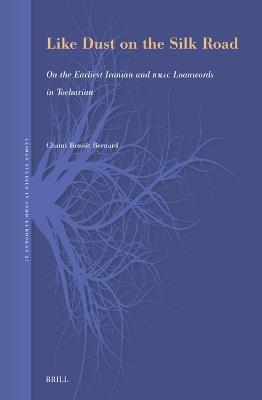Like Dust on the Silk Road: On the Earliest Iranian and BMAC Loanwords in Tocharian
"How did the Tocharians reach China?" "Who did they meet on the way?” are some of the most intriguing questions in Indo-European studies. This book is zooming in on a specific part of the question: on their way to China, Tocharians were in contact with an Iranian people living in the south Siberian Steppes, and with a people related to the Oxus Civilization (BMAC). This Iranian people spoke a specific language, called here “Old Steppe Iranian”. They gave Tocharians many words, such as mañiye ‘servant’, etswe ‘burden-carrying horse’ or ‘mule’, pāke ‘portion, share’. The BMAC-related people gave the Tocharians other words such as etre ‘hero’ and kercapo ‘donkey’. This book reconstructs features of the language of both these peoples, and examines how they influenced the Tocharians. Based on the latest archaeological findings, it also suggests a reconstruction of the chronology and the way the Tocharians followed before entering the Tarim Basin. Winner of the 2nd prize for the best dissertation of the Indogermanische Gesellschaft prize for the best Indo-European studies dissertation.
-
Autore:
-
Editore:
-
Collana:Leiden Studies in Indo-European
-
Anno:2025
-
Rilegatura:Hardback
-
Pagine:308 p.
Le schede prodotto sono aggiornate in conformità al Regolamento UE 988/2023. Laddove ci fossero taluni dati non disponibili per ragioni indipendenti da Feltrinelli, vi informiamo che stiamo compiendo ogni ragionevole sforzo per inserirli. Vi invitiamo a controllare periodicamente il sito www.lafeltrinelli.it per eventuali novità e aggiornamenti.
Per le vendite di prodotti da terze parti, ciascun venditore si assume la piena e diretta responsabilità per la commercializzazione del prodotto e per la sua conformità al Regolamento UE 988/2023, nonché alle normative nazionali ed europee vigenti.
Per informazioni sulla sicurezza dei prodotti, contattare productsafety@feltrinelli.it



